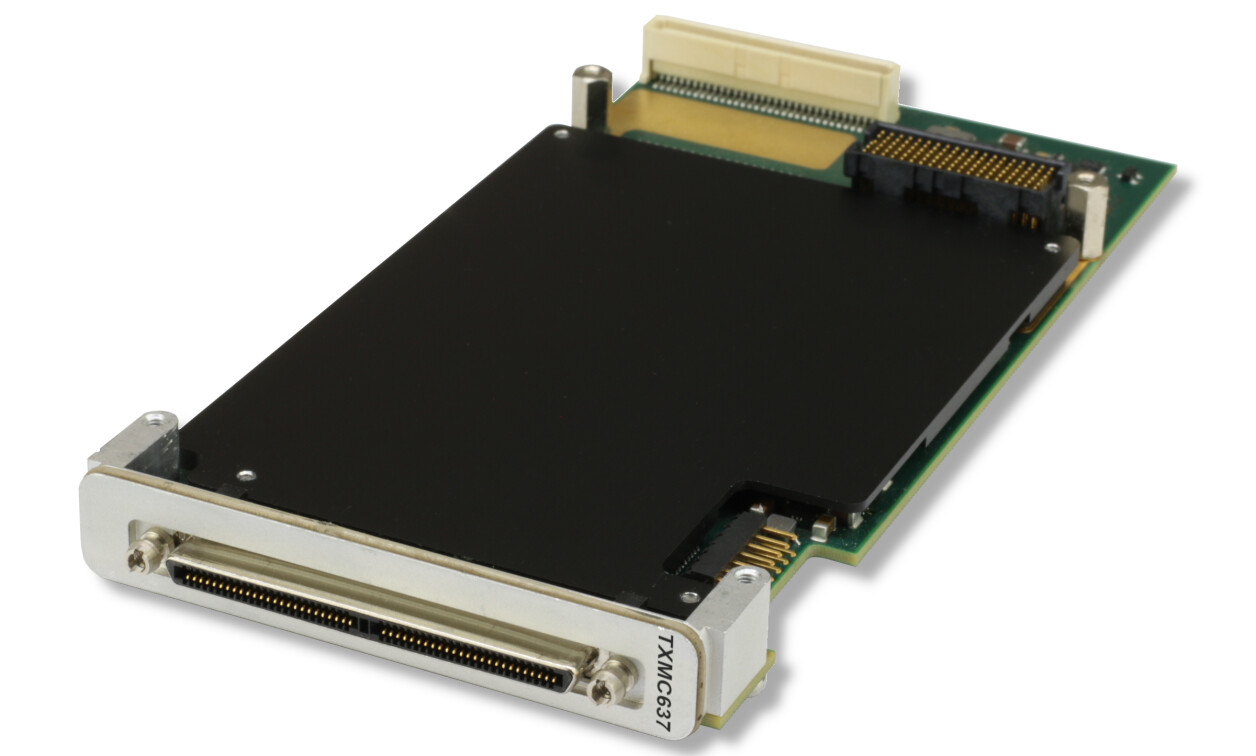 Technobox, Inc. advanced 32-channel RS485/422 XMC (P/N 8643). Photo courtesy of Technobox, Inc.
Technobox, Inc. advanced 32-channel RS485/422 XMC (P/N 8643). Photo courtesy of Technobox, Inc.
The Switched Mezzanine Card (XMC) standard, also known as VITA 42, provides a broad base for traditional high-speed, switched interconnect mezzanine cards. The XMC standard was recently revised to ANSI/VITA 42.0-2021, benefiting mezzanine and carrier card applications that utilize higher higher-speed interface specifications.
“XMC offers flexibility and scalability for routing high-speed protocols in a number of popular rugged computing form factors,” said Burrell Best, SI industry standards manager at Samtec. “The latest ANSI/VITA 42.0-2021 revision features several enhancements enabling support for multi-gigabit protocols in next-generation XMC applications. Additionally, new resources simplify implementation of the electromechanical interface between carrier cards and mezzanines.” This revision effort was led by Samtec with the help of several other VITA members.
XMC is the latest generation of low-profile mezzanine card standards based on the popular PMC standard. These revisions extend the performance and utility of the standard for the most demanding applications.
XMCs are widely used in applications where the carrier board has high limitations, from 3U/6U slot cards such as VME, VPX, and CompactPCI to motherboards and custom form factors. Many suppliers use a variety of carriers and XMCs that can be quickly combined into a wide range of products for specific applications. This “building-block” approach facilitates a very quick time-to-market strategy.
Revisions
The XMC connector’s original electrical footprint has been revised to a more efficient “via-in-pad” design, allowing for a higher level of performance, while still being backwards compatible.
Improved figures have been added throughout the standard document to improve readability. Several new figures provide guidance to better understand the mechanical interface between XMC mezzanine and carrier cards.
Information concerning air and conduction cooling, as well as PMC connector use, was updated. This revision mentions the VITA 61.0 XMC 2.0 standard based on VITA 42 and also introduces the proposed VITA 88.0 XMC+ next-gen mezzanine standard. VITA 88.0 utilizes an alternate, ruggedized, higher-speed mezzanine interconnect compatible with the VITA 42 electrical footprint.
An “XMC Informative Design Guide” has been added to provide support when developing high-speed XMC mezzanine and carrier cards. XMC mezzanine and host board design considerations, trace length recommendations, and loss budget estimations for PCI Express are presented in this guide. The intention is to provide the designer an informative reference, and also to highlight a range of design choices that are important to consider when designing high-speed interfaces.
The entire standard has been reformatted to use current VITA standards requirement terminology. VITA standards are also starting to include basic guidance on compliance and verification methods, which have been added to the ANSI/VITA 42.0-2021 standard in section 2. A product’s performance must be verified to all requirements listed in applicable rule(s) in order to claim compliance to a standard. The Verification Method List consists of one or more of the following:
- Inspection
- Demonstration
- Analysis
- Test
- Verification Not Required
- Root or reference standard test applies
Some of the appendices have been moved into the main body of the standard, as they contain requirements that must be met.










